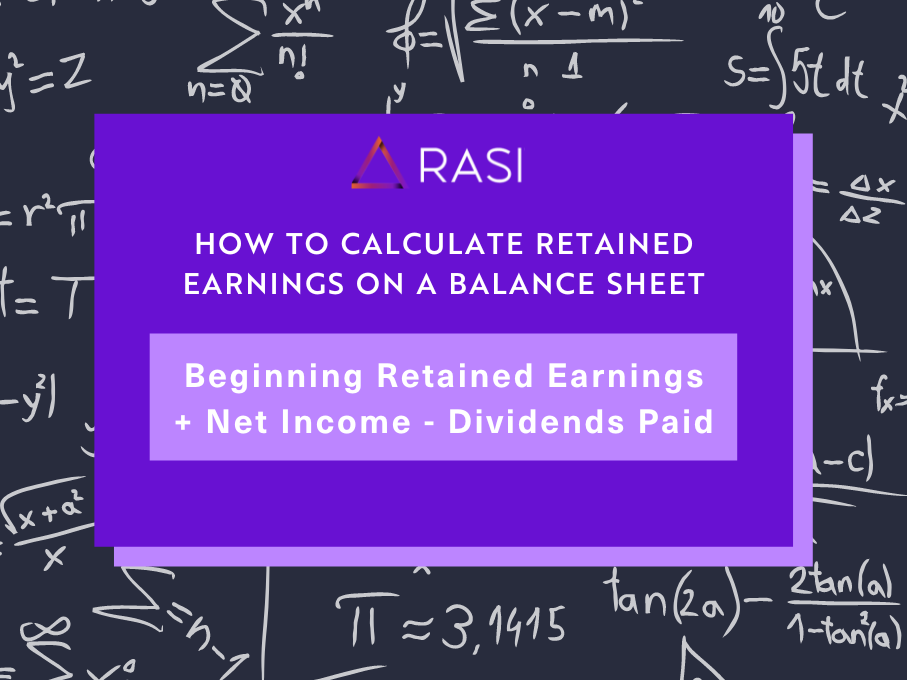Retained earnings are the lifeblood of a company’s financial growth and sustainability. They reflect the net income that has been reinvested in the business rather than distributed as dividends. This post will illuminate what retained earnings on a balance sheet are and the steps to calculate them.
What Are Retained Earnings on a Balance Sheet
Retained earnings on a balance sheet are the net income that a company has decided to keep or ‘retain’ after distributing dividends to its shareholders. This balance, found under shareholder’s equity, can be utilized for reinvestment in business expansion, debt reduction, or reserves against future losses. It’s the profit that fuels a company’s growth and symbolizes its financial health.
What Do Retained Earnings on a Balance Sheet Tell You
Retained earnings on a balance sheet provide a window into a company’s financial health. A positive retained earnings balance suggests a profitable company, demonstrating that it has generated surplus income over its dividends and overheads. Conversely, negative retained earnings might indicate a company’s consistent losses or large dividend payouts. Observing the evolution of these earnings can reveal business profitability trends and the management’s dividend policies.

How Retained Earnings on a Balance Sheet is Used
Retained earnings serve multiple purposes, integral to a company’s financial well-being. This money can be used to fund business expansions or to finance new projects and product development, propelling the company’s growth. Retained earnings can also help reduce liabilities by repaying debts, thereby improving the company’s debt-to-equity ratio. Furthermore, they can act as a financial cushion for future downturns or unforeseen expenditures, strengthening the company’s financial resilience.
How to Calculate Retained Earnings on a Balance Sheet
Understanding how to calculate retained earnings on a balance sheet is crucial to assessing a company’s financial strength. The calculation starts with the retained earnings at the beginning of the period, adds the net income or subtracts net loss of the current period, and then deducts any dividends paid out. The formula is as follows:
Retained Earnings = Beginning Retained Earnings + Net Income – Dividends Paid

Example of Retained Earnings on Balance Sheet
To illustrate how to calculate retained earnings on a balance sheet, imagine a firm starting the year with $50 million in retained earnings.
It earns a net income of $30 million during the year but decides to distribute $10 million as dividends to its shareholders.
In this case, the retained earnings at year-end would be calculated as $50 million (beginning retained earnings) + $30 million (net income) – $10 million (dividends paid) = $70 million.
Difference Between Retained Earnings and Dividends
Retained earnings and dividends represent different paths for a company’s net income. Retained earnings on a balance sheet are those profits that a company chooses to reinvest in its operations or hold as a safety net. In contrast, dividends are a portion of the profits distributed to shareholders. The decision to reinvest profits as retained earnings or distribute them as dividends depends on the company’s growth strategies and financial health.
Limitations of Retained Earnings
Although retained earnings provide crucial insights into a company’s ability to generate profits and reinvest in its operations, they are not without limitations. High retained earnings could mean the company is consistently profitable, but it could also suggest the company isn’t reinvesting its profits effectively or isn’t returning enough profits to its shareholders. Therefore, when examining retained earnings on a balance sheet, it’s important to consider other financial indicators for a well-rounded view.
Understanding retained earnings on a balance sheet and how to calculate them helps you to steer your company toward greater growth and success. For more assistance with your restaurant accounting, please schedule a demo or call us today at (720) 826-9900.







